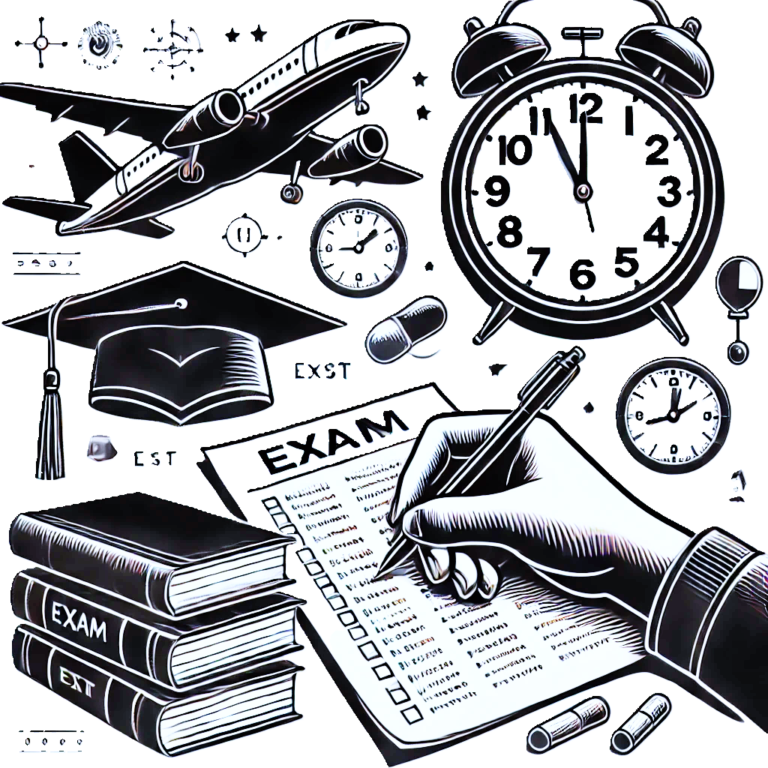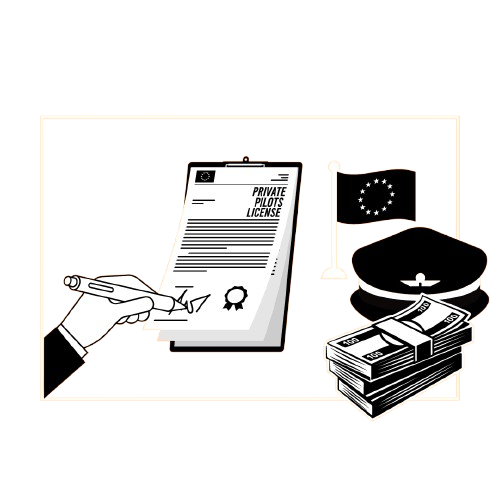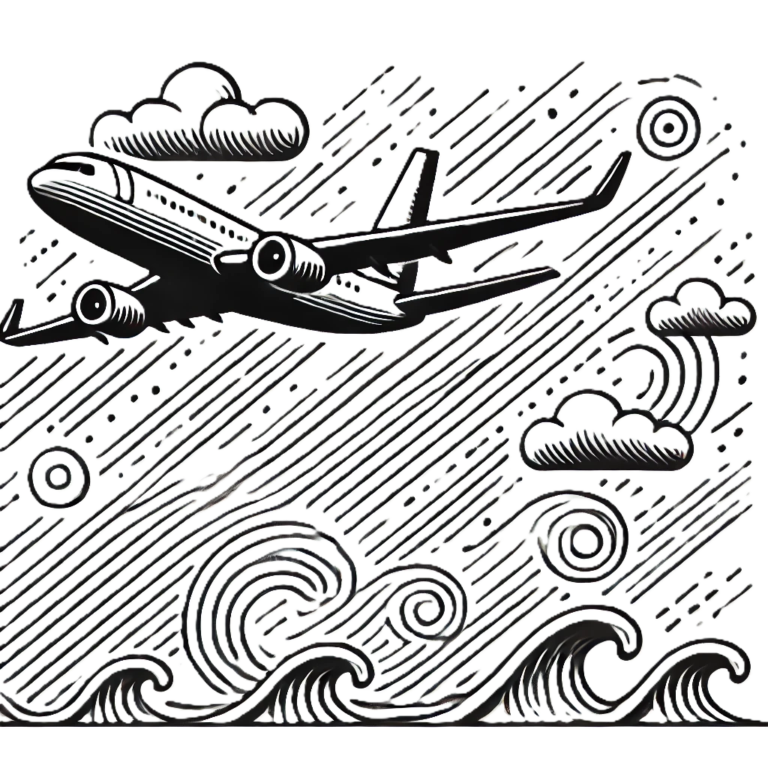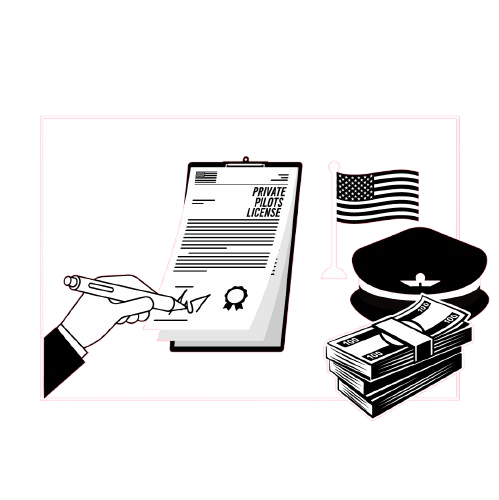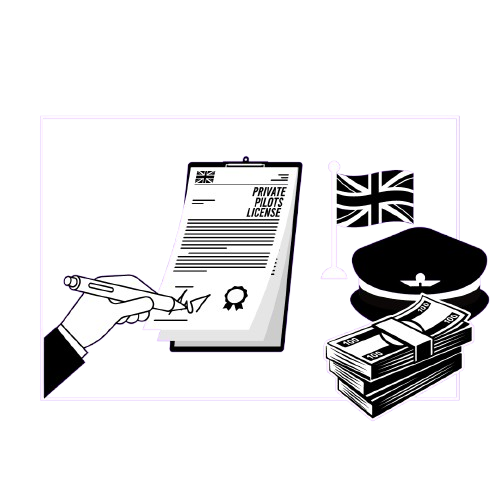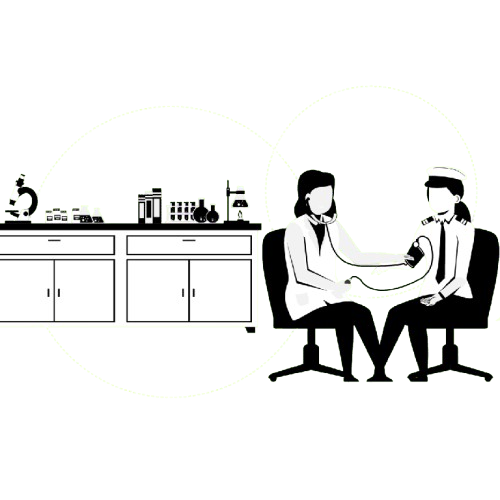The ultimate how to become a pilot guide.
Written by a real commercial airline pilot with over 4500 hours on the Airbus A320, this guide will provide you with everything about how to become a pilot.
We will provide information whether you’re based in the UK, Europe, America/Canada, or anywhere else.
A guide on how to become a commercial pilot slightly depends on whether you are in the USA, Canada, UK/Europe.
This is because the Federal Aviation Administration (FAA) in America has a strict rule on the eligibility requirements of the hours required to start your aviation career with an airline.
This is a 1500-hour rule, which means all American pilots require 1500 hours before starting in the aviation industry with a regional or commercial airline.
Whereas those looking at how to become a pilot in the UK and Europe can enter a major airline with their commercial pilot license right out of training.
Whether you are 16 years old and looking at how to become a pilot, a 40-year-old looking for a career change, or even ex-air force, this guide will cater to everyone.

How Long Does It Take To Become A Pilot?
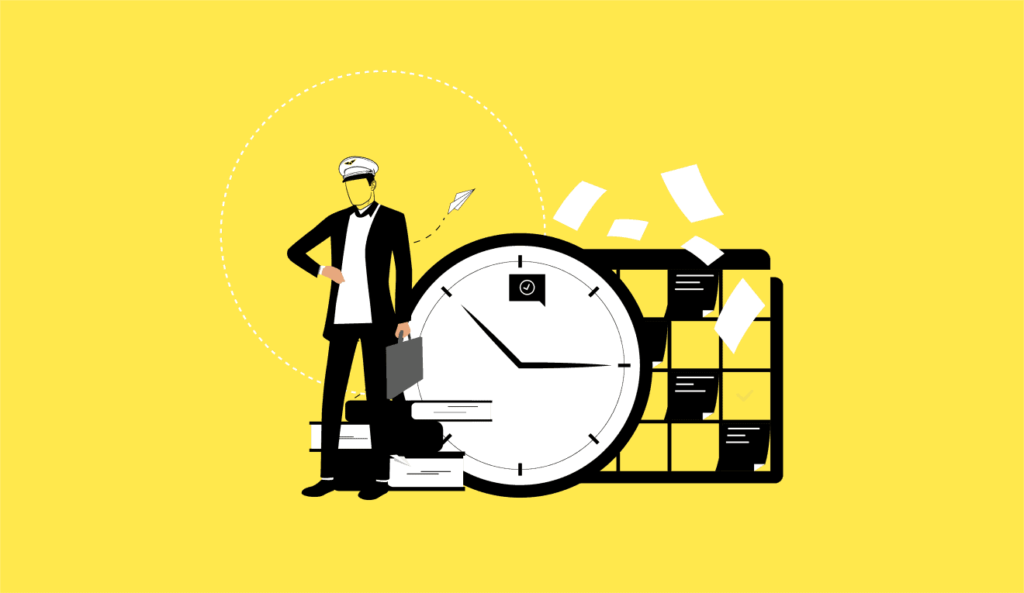
One of the first questions I get asked when people want to know how to become a pilot is, “How long does it take to become a pilot?”.
When answering how long it takes to become a pilot, we need to look at where you are conducting your training.
Want more information? Read our full guide on how long does it take to become a pilot?
How Long Does It Take To Become A Pilot In Europe?
When looking at how to become a commercial pilot in the UK and Europe, we must understand how long it takes.
You can join an airline straight after training.
If you want to know how much you’ll earn as a pilot in the UK after training, check out our blog post covering a pilot salary UK!
On an Integrated, fast-track scheme, you can complete your training and get your Frozen ATPL/ATP License (Airline Transport Pilot License), the license required to work for a major airline, in 18 months.
I went from 0 logged flight hours to flying passengers for a major airline in under two years. Read about my flight training journey.
If you want to do your training more slowly and less expensively, you can do it in a modular scheme, where you do your flight training in chunks, almost like a pay-as-you-go scheme.
During both the Integrated and Modular courses, you will complete the following:
- Ground School – The first step to getting your professional pilot license, where you will cover your 14 Air Transport Pilot License (ATPL) exams.
- Flying and Hour Building – Including your first solo flight, your multi-engine rating/training, and other exciting steps where you’ll fly as a student pilot. You might receive your private pilot certificate/license (PPL) during this stage. This will usually involve your cross-country flying too. However you do it, it will involve a lot of practical tests.
- Instrument Rating – Where you’ll learn to fly an airplane using just the instruments and without visual references. This is known as flying under instrument flight rules. This will allow you to fly in more challenging weather conditions.
- Airline Qualification Course (AQC), sometimes known as a Multi Crew Cooperation course (MCC), where you will work with another trainee conducting various flying tasks in simulators. You’ll be in a completely realistic Boeing/Airbus cockpit at this point!
- Type Rating – You must complete further training, known as your Type Rating course, which can take about two months. This rating provides you a license to fly a specific type of aircraft (for example, for me, it was a Type Rating on the Airbus A320).
These laws set out by the Civil Aviation Authority (CAA) and the European Union Aviation Safety Agency (EASA) differ from those in America.
How Long Does It Take To Become A Pilot In America?
Looking at how to become a pilot and how to become a commercial pilot is very different in America than it is in the UK/Europe.
The 1500-hour rule is a law by the Federal Aviation Administration (the governing body in American aviation) that requires all pilots in America to have at least 1500 hours of experience/flight time before being eligible to fly for regional airlines or major airlines.
With this, those in Canada will also need 1500 hours to fly for major airlines, but luckily don’t need these 1500 hours to fly for regional airlines.
This means that newly qualified cadets in America can only become airline First Officers for airlines once they acquire the required 1,500 hours of flight time.
They are therefore forced to spend additional time (usually 12-24 months) hour building as flight instructors on small aircraft (or other methods) until they can apply to these airlines. Therefore, they will be required to complete their certified flight instructor rating.
Later in the guide, we will discuss how these qualified cadets acquire these 1,500 hours, known as hour building.
When people ask how long it takes to become a pilot, most are interested in how long it takes to fly for airlines.
Therefore, this will give the total time to become an airline pilot of:
- At least two years before being eligible to fly for regional airlines (though this usually takes around three years).
- At least three years working at the regional airline, before being eligible for the major airlines. However, most will serve around 5 years before moving from regional airlines to major airlines.
*Of course, with both points above, you must find a job with a regional/major airline, which can greatly increase this time.*
How Much Does It Cost To Become A Pilot?

Probably the most important topic when looking at how to become a pilot or, more importantly, how to become a commercial pilot.
You can read our full guide about how much does it cost to become a pilot.
It Usually Costs Between $60,000-$100,000+ To Become Fully Qualified (the same in £/€ too).
However, this does depend on multiple factors, so keep reading for more.
*Personal Experience*
I paid a whopping £130,000 to become a qualified first officer in the UK. This included £100,000 for the flight training and living costs and a further £30,000 for my Type Rating (a license to allow you to fly a specific aircraft type) on the Airbus A320.
Other cadets finished their training and were immediately employed on the Boeing 737.
A considerable amount of money, but worth it.
Cost To Become A Pilot – The Integrated Training UK/Europe
Integrated or accelerated flight training is one of the routes to becoming a commercial airline pilot and is the quickest but usually most expensive.
In the UK/Europe, you can expect to pay upwards of £/€80,000 to conduct the integrated flight training.
These ‘packaged’ training courses will take you from 0 hours to the required license and certification to fly for a major airline and let your career path takeoff. On successful training, you can expect to complete this within 18-24 months.
How Much Pilot Training Costs
America/Canada
Looking at how to become a pilot or how to become a commercial pilot in the quickest possible time in America?
It’s worth noting that these fast courses might be called Accelerated Airline Pilot Track (AAPT) courses in America and are slightly different from those in the UK/Europe.
Although some of these flight academies will offer to ‘qualify’ you within 12 months, it will take longer than this to have the necessary qualifications to join your first regional airline (see the previous chapter for more).
It’s worth checking what’s offered, as you want to ensure you know exactly what you are signing up for before starting the course, as you don’t want to pay all of that money and then be told you need to spend more money to get the type of license that you need.
You will need a course that covers the following:
- Private Pilot Certificate (known as a PPL) – Attain this to act as the pilot in command of a small aircraft.
- Instrument Rating – This is necessary to fly the aircraft safely using the instruments only and not relying on outside references.
- Commercial Pilot Certificate – A Commercial Single-Engine Certificate is a qualification that allows someone to be paid to fly as a pilot-in-command of a single-engine aircraft for compensation.
- CFI and CFII – A Flight Instructor Single-Engine Certificate enables you to teach cadets on a single-engine aircraft.
- Instructor – Work as an instructor to build the mandatory 1500 flight hours and get paid.
- A Multi-Engine Rating.
This is usually the quickest way to become an airline pilot and usually takes around 18 months. It usually includes everything, including accommodation, but will not include your living expenses (food, etc.)
Most integrated/accelerated flight training programs will cost towards the upper end of the price range and are usually $80,000 as a minimum.
If you’re looking at how to become a pilot but can’t afford this hugely expensive price, you can do it slightly cheaper by breaking your flight training up. We will talk about this later.
How Do Pilots Pay For Flight Training?
When looking at how to become a pilot, you’re probably wondering how you pay for your training.
Read our full guide all about How Pilots Pay For Flight School.
This is probably the question I get asked the most, and before we get into this chapter, I am not a financial advisor. However, you should always do thorough research before paying for flight training.
I am here to point you in the right direction on how you can find this information and finance your flight training.
You can skip this chapter if you have enough money to pay for your training without a loan or other financing alternatives.
However, most will be keen to understand how cadets can pay this large amount.
You do not need to be rich to become a pilot. I certainly wasn’t.
Flight Schools Are Just Businesses
You must understand the following when looking at how to become a pilot and how to become a commercial pilot.
Training organizations know how expensive their training programs are; therefore, they usually have a finance specialist available to answer questions.
They want you to be able to get the finances. This will allow you to pay them for your training and for them to make money as a business. Remember, you are the customer.
The finance team at each flight school is one of your most significant assets regarding fact-finding regarding financing your training.
Tailor-Made Financing Options
Some larger flight schools now offer financing options tailored to your flight training. These specialized loans should offer competitive interest rates and the option to pay off pilo loans early without penalties.
They will likely offer ‘repayment holidays’ also. This means that from the point you take your loan, you won’t have to pay back the loan until a period has passed.
For example, it might be two years before you need to start paying back your loan, allowing you to complete your training without worrying about repaying your loan while you are not earning any income.
As we will look at in the salaries section, it’s worth remembering that your starting salary won’t be huge. Therefore, considering your loan repayment costs in the early stages of your career is essential.
How Much Do Pilots Make?
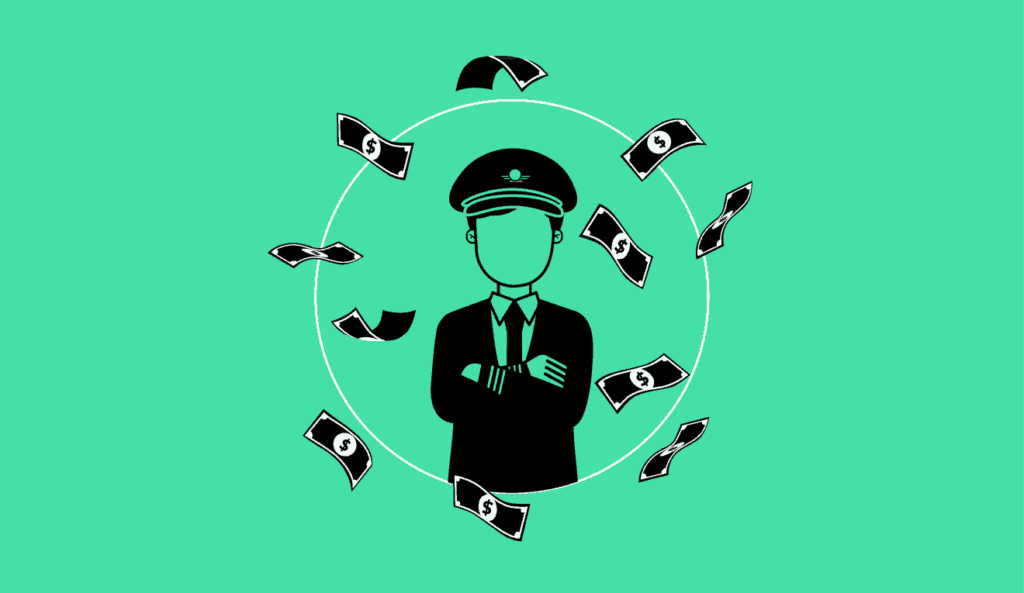
Do Pilots Make A Lot Of Money?
When looking at how to become a pilot and, more importantly, how to become a commercial pilot, people often want to know how much money they can make, especially as training to become a pilot is so expensive.
We have a huge, in-depth blog post covering everything to do with a pilot salary and how much pilots earn.
Do Pilots Get Paid A Good Salary In The Aviation Industry?
Flight crew can earn great money.
According to the Bureau Of Labor Statistics, the median salary for airline captains, first-officers and second-officers, and flight engineers in the United States is $203,010 as of 2021.
However, these salaries have increased massively since then.
American Airlines CEO Robert Isom has just proposed a deal to American Airlines flight crew worth a 40% pay rise.
This deal will see a widebody captain at the top of the payscales, making a basic salary of $590,000 annually and a narrowbody captain making $475,000 a year.
You can read more about an American Airlines Pilot Salary here.
We have written an incredibly detailed blog post about airline pilots’ salaries.
Pilot Salary UK
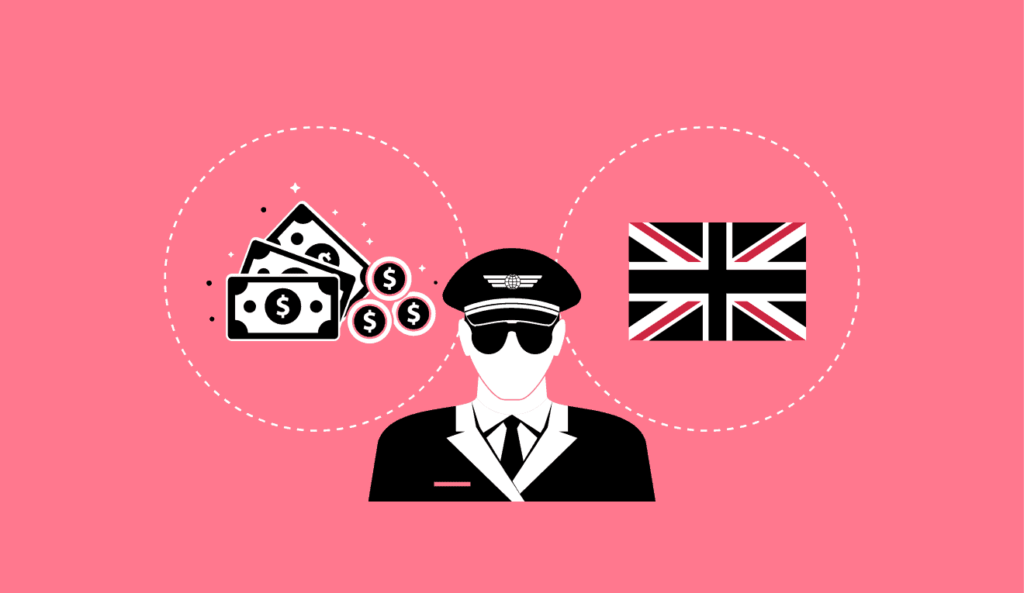
Pilots in the UK earn less than those in America.
An airline captain flying for a long-haul airline can expect to make around £200,000 towards the latter end of their career.
Short-haul captains for low-cost airlines such as easyJet and Ryanair can still expect to make around £150,000 a year after spending around 10 years within the airline.
Read more about a pilot salary UK to learn everything you could ever need about how much pilots make in the UK.
Commercial Pilot Salary – Pilot Career Progression
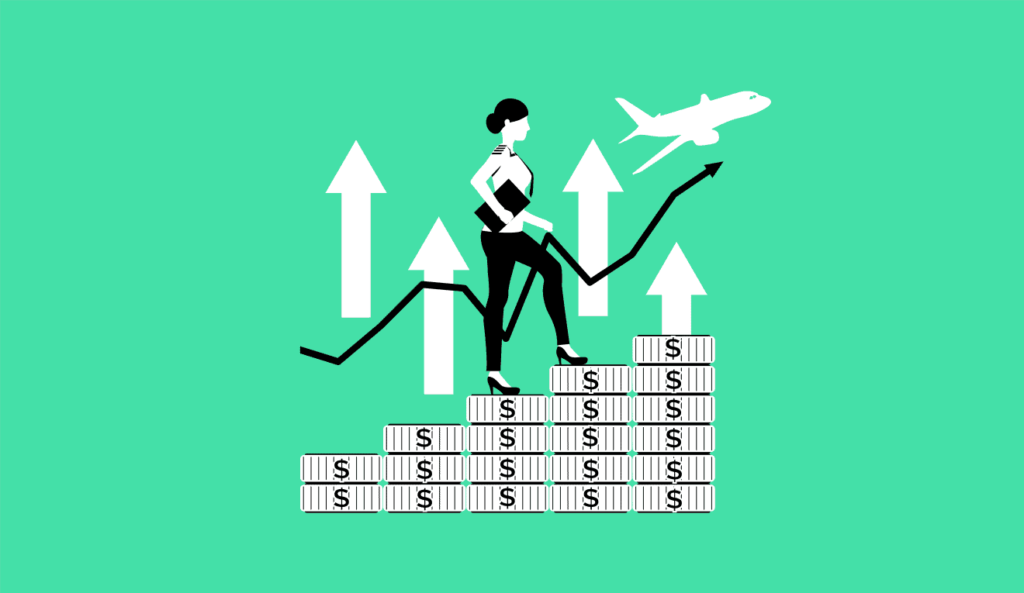
When looking at how to become a pilot, you’re probably interested in how much money you will make in the early stages of your career.
It’s worth noting that a pilot’s salary will increase with the more experience they have and the amount of time they have spent in the airline.
Therefore, you will earn less money in the early stages of your career than when you have much flight experience.
You can read our new blog post about commercial pilot salaries and the pilot career progression here.

Airline Captain Salaries Worldwide
- UK – A senior long-haul airline captain’s salary is around £200,000
- Europe – A senior long-haul airline captain’s salary can be as much as €250,000
- America – A senior long-haul captain in America can be well over $300,000 yearly. It’s not unheard of for captains to make over $500,000 a year.
- Middle East – A senior long-haul airline captain’s salary in The Middle East can be well over $220,000 yearly (though the additional packages such as living allowances top this figure up massively).
- Asia – The average salary for an airline captain can be over $400,000 annually in Asia.
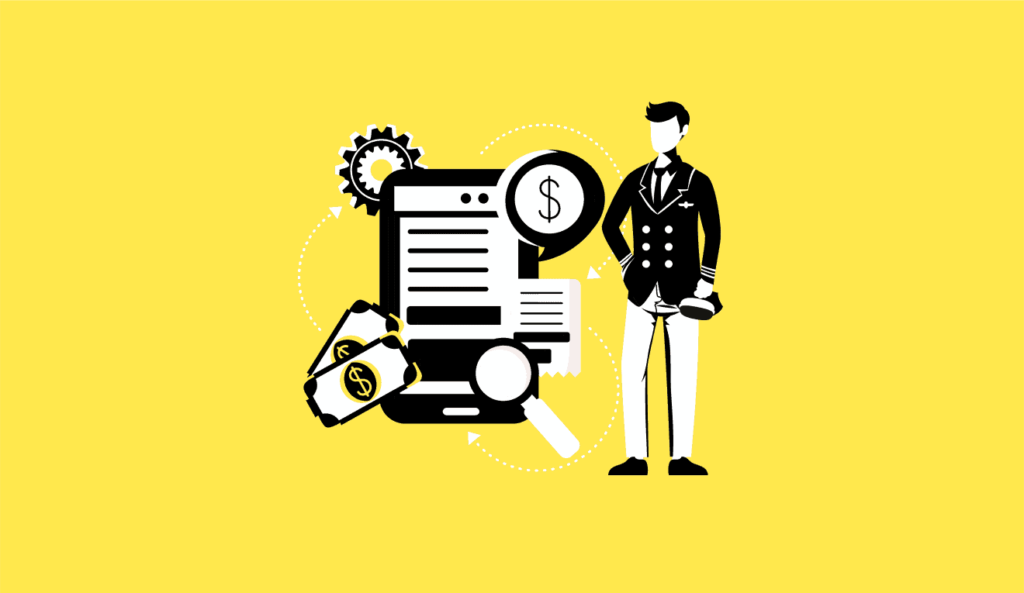
How To Become A Pilot – How To Become A Commercial Pilot
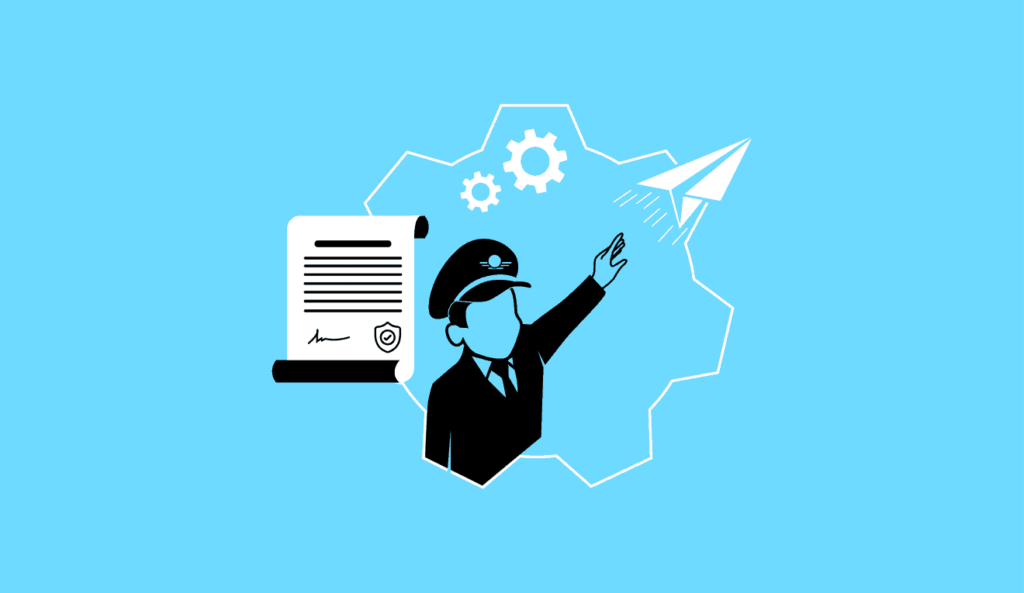
Now we will look at the actual HOW of how to become a pilot.
There are some essential points to consider when looking at how to become a commercial airline pilot.
The Medical Requirements – Class 1 Medical Qualifications

Class 1 Medical Certificate
This a very important step when looking at how to become a pilot, as no medical means no aviation career.
Read our dedicated post about Class 1 Pilot Medical requirements in the UK! (US Coming Soon!)
You do not need to be extremely fit, athletic, and unique to pass them, but you must satisfy a certain level of health to deem you safe enough to fly.
For example, it’s a myth that you need 20/20 vision to work for an airline.
The Civil Aviation Authority (CAA) is the UK aviation governing body. Here is what they test for:
- Medical history
- Eyesight
- Physical examination
- Electrocardiogram (ECG)
- Lung function test
- Haemoglobin blood test
- Urine test
The Federal Aviation Authority (FAA) conducts the medical exam in America and conducts the same tests to give you an FAA Medical Certificate.
As mentioned, the aviation medical examiner (AME) is not expecting you to be athletic or superhuman. Just healthy enough to be safe when operating a large jet.
FAA Class 1 Medical Requirements
How to become a pilot – Federal Aviation Administration (FAA) requirements for a Class 1 Medical.
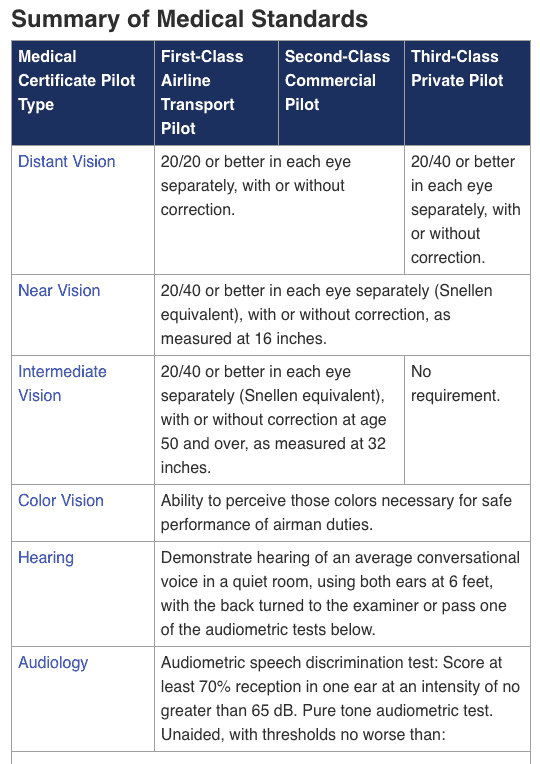

Do You Need 20/20 Vision To Become An Airline Pilot?
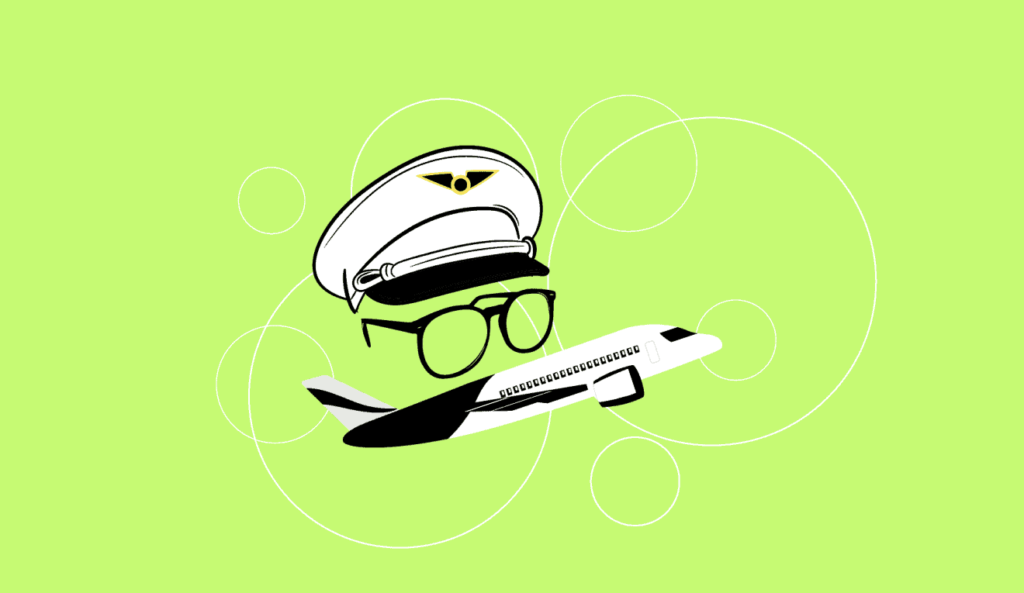
I have met so many people who want to know how to become a pilot or how to become a commercial pilot, but they are terrified that they won’t ever be able to pursue this dream due no not having 20/20 vision.
So when looking at how to become a pilot, do you need 20/20 vision?
The short answer is: it depends.
But firstly, I want to state that you CAN wear glasses as an airline pilot. About 50% of all pilots I fly with wear glasses.
According to the American Federal Aviation Administration (FAA), and the UK’s Civil Aviation Authority (CAA), the minimum vision requirement for a license is 20/40 in each eye, with or without correction.
This means that you must be able to read an eye chart from a distance of 20 feet, with the most minor line you can read equivalent to what a person with ‘normal’ vision can read from 40 feet away.
If you don’t have the required vision without glasses or contact lenses, that doesn’t necessarily mean you can’t become a pilot. However, pilots must have eyesight that can be corrected via other means (glasses or contacts).
If flight crew were not allowed glasses or contact lenses, the chances are that most would need to retire very early in life, as our eyesight naturally deteriorates over time!
The idea of requiring perfect eyesight to fly as a commercial pilot is usually taken from the air force/military. High G force maneuvers and face oxygen masks mean an operator needs perfect vision without correctable devices.
Suppose you’re an aspiring flyer concerned about your vision and its potential impact on your ability to become a pilot. Speaking with an eye doctor/optician is a good idea to determine your options.
You can achieve your dream of taking to the skies with the correct vision correction and determination.
If you have any other eye issues, such as being color blind, it’s always worth getting your eyes tested and comparing the results to the requirements on the FAA/CAA/EASA website.
How To Become A Pilot – The Educational Requirements
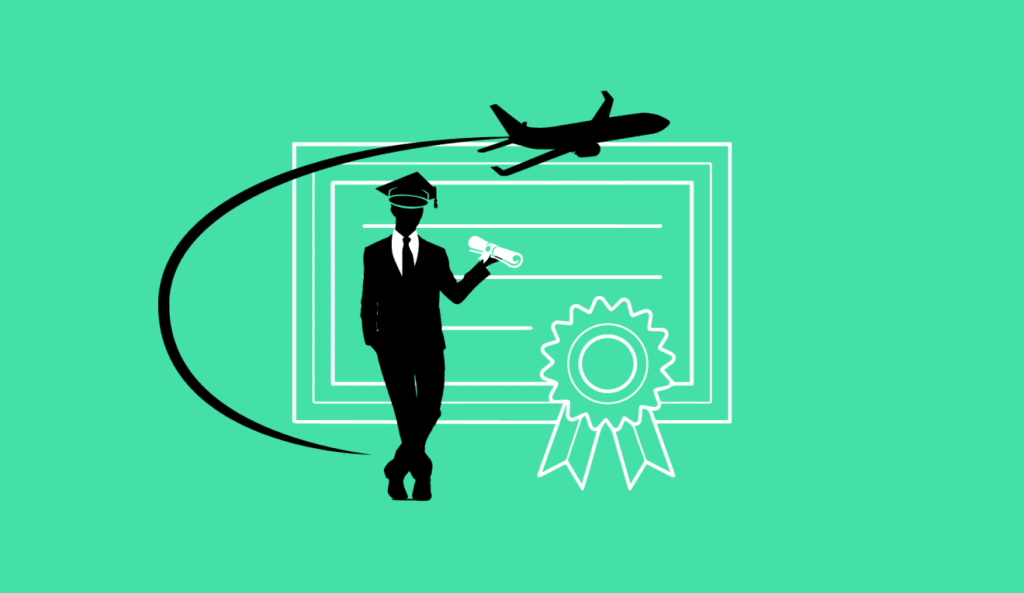
What Educational Qualifications Do You Need To Become A Commercial Pilot?
When looking at how to become a pilot, one of the things that might worry you is the educational requirements.
You do not need a college degree or university degree to become an airline pilot.
Although many who start their training have some degree, this is not required to start your professional pilot training.
There might be some flight schools or airlines that require you to have a degree. However, this is rare in the industry nowadays, and applicants shouldn’t worry.
Most flight schools will require GCSEs for those in the UK or a high school diploma/ be a high school graduate in America/Canada.
As part of your assessment, you might be required to carry out a verbal reasoning written exam, but this is nothing to be afraid of.
It has been known that some major airlines will favour one person over another if they have a college or university degree, but this is very rare nowadays.
With the pilot shortage in America, airlines can’t get enough qualified flight crew and, therefore, won’t care whether or not you have a degree.
I am proof of this, as I finished my A levels at 18 years old (similar to finishing high school in America/Canada) and decided to start my training immediately.
If you have any concerns or questions regarding the entry requirements, go directly to the flight school and ask them once you have found the right flight school.
You Will Need To Be Able To Read, Write and Speak English Fluently To Meet The Required Eligibility
If you are a cadet or student from overseas and international students looking at how to become a pilot or how to become a commercial pilot, you will need to speak English fluently.
Aviation is an English-speaking industry.
Therefore, you must be fluent in English (verbal and written).
Non-native English speakers must achieve level 5.5 individually and overall in IELTS or equivalent ICAO level 4 before starting training.
You need to speak to your flight school of choice to find out exactly what is required. We will discuss finding the perfect flight school later in this guide.
This is essential when looking at how to become a pilot.
Should I get a Private Pilots License (PPL) before pilot training?
You might be wondering how to become a pilot and whether or not it’s worth getting a private license before starting your training.
You do not need a PPL, or a student pilot certificate, as it is sometimes known, before starting with a flight school.
If you are wondering how to get your private pilot license, then take a look at our guides!
- How to get a Private Pilot License UK
- How to get a Private Pilot License America
- How to get a Private Pilot License Europe
Some flight schools will not factor these hours into your flight training as you may have picked up techniques/methods that aren’t fit for training to fly professionally.
However, if you already have a PPL or several flight hours logged, you can ask your flight school if they will recognize some of them.
This will hopefully reduce the cost of your training.
If you are going to complete your training on the modular route, then getting a PPL isn’t an awful idea.
And, of course, if you want to get your PPL for your joy and benefit before flight training, you should do so!
This is a significant research point when looking at how to become a pilot, so make sure you make these enquires with your chosen training provider.
How To Become A Pilot – Find The Best Flight Training School
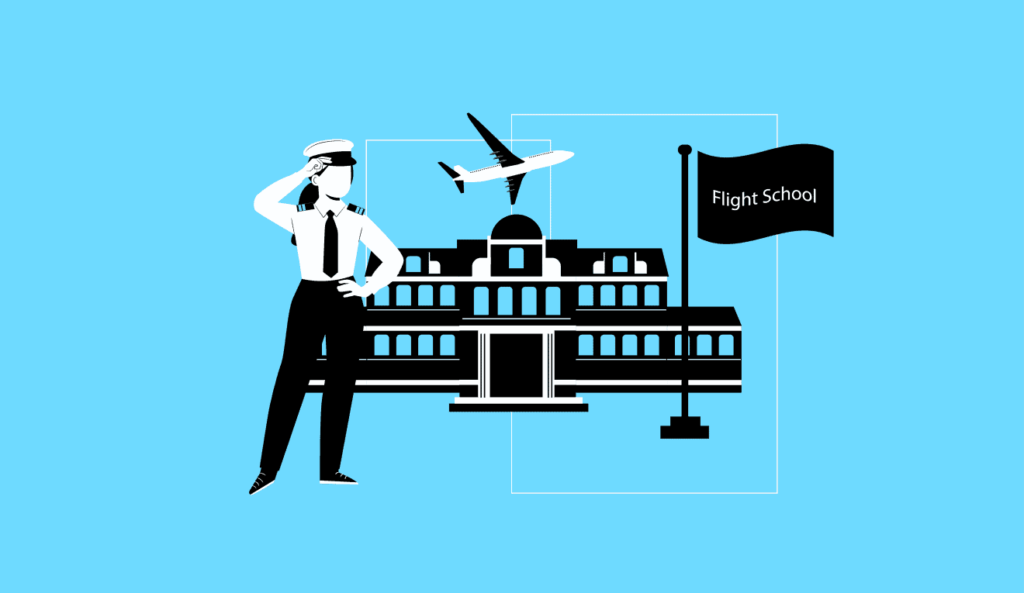
How To Find The Best Training Academy
One of the most important steps when looking at how to become a pilot is finding the best flight training organization (FTO)/ flight school.
It is essential to find the FTO best suited to your needs.
This video should help you in finding the best flight school. The flight school that gives you the highest chance of getting a job after training!
Job Placement Success
One of the most important steps when looking at how to become a pilot and how to become a commercial pilot is finding the best flight training organization (FTO), often known as a flight school, for you.
While it’s essential to find a flight school that ticks all of the boxes in terms of prices, location, etc, what’s really important is:
After completing your training, how likely will you get a job as an instructor or with a regional or major airline?
You might think everyone with the necessary license has an equal chance of getting a job. But sadly, you would be wrong to assume this.
Some flight schools have special relationships with regional and major airlines, increasing your chances of getting an airline job.
Also, some airlines have a better pass/success rate than others.
Ultimately, you are paying a lot to become an airline pilot with a job, not just the qualification.
For example, if a flight school has trained 500 cadets in the last five years and only ten have received airline jobs, this isn’t the flight school to pick.
This is a CRUCIAL stage in your research of how to become a pilot.
Partner/Affiliated Airlines – How To Become A Commercial Pilot
THIS IS AN IMPORTANT STEP – PLEASE PAY ATTENTION
When looking at how to become a pilot and how to become a commercial pilot, you need to be looking at your employment chances after completing your training.
You need to factor in whether the flight school has any partner airlines.
As the name suggests, partner airlines are associated with said flight school.
This means the flight school and the airline will agree that the airline will employ newly qualified flyers directly from that flight school (or after reaching 1500 hours in America).
Once these cadets have completed their training, the FTOs will place these newly qualified aviators with partner airlines.
Some flight training organizations will directly place graduates with British Airways, EasyJet, and Ryanair in the UK and regional airlines like Spirit Airlines, Endeavor Air, Skywest, etc., in America.
Some flight schools will not have any partner airlines but may still have a fantastic track record and history of their graduates finding employment in a relatively quick timeframe.
Again, this is because their training has an excellent reputation with airlines.
For those American cadets, it’s also crucial to make sure they offer you a way of building your 1500 hours, potentially as a paid flight instructor.
I chose my flight training school as it had a great set of partner airlines. That’s why I was employed by easyJet so quickly after my training. Read about my pilot journey.
Again, I must emphasize that this is a hugely important step when looking at how to become a pilot and how to become a commercial pilot.
How To Find This Information Job Placement History Information
Ensure you get the statistics of how many cadets graduated from the FTO that year and how many graduate cadets were placed with airlines or just within general employment in America.
Again, this will be a key part of your research into how to become a pilot.
Get the statistics for the previous five to ten years, as this will provide general information and will take out all of the swings with the changes in demand in the industry.
It’s essential to do your research when searching for a flight school, as this is potentially one of the most significant investments of your life.
Spend time researching this. It’s one of the most important steps when looking at how to become a pilot/how to become a commercial pilot.
Payment Protection Insurance
Becoming a commercial airline pilot is hugely expensive.
It’s no easy task, and you will face areas more challenging than others.
These obstacles could come from having a bad day when undertaking ground school exams or a flight test.
Some flight training organizations offer payment protection (it may be named differently at other FTOs).
The flight school will cover to cost of any retakes, re-assessments etc.
These retakes can be expensive, so it’s worth knowing if your flight school offers this.
Request As Much Information As Possible/Attend Open Days
One of the best places to get information on how to become a pilot is by attending open days at training schools.
In a country like America, you might have to travel for hours to attend these. However, these are the ultimate source of information when looking at how to become a pilot.
Even if these open days are a plane/train/drive away from where you are, I would hugely advise anyone serious about training to visit the flight school at least once.
You will have the chance to speak directly to the people running the operation and ask them about their job placement history, and you will also be able to speak to the cadets.
Cadets doing their training will offer you a vital source of information.
They will provide you with the most reliable and up-to-date information possible.
This is an essential source of knowledge, and I can’t stress just how important this is.
Go to these open days. I went to two before signing the dotted line and handing over almost £100,000 to my flight school.
I highly recommend attending at least one open day when researching how to become a pilot.
How To Become A Commercial Pilot – Pick The Best Course
When looking at how to become a pilot, you need to understand the different flight training courses to pick the one that works best for you.
Differentiating between different packages, courses, and routes will be essential in your research on how to become a pilot.
But don’t worry. We have you covered.
The Integrated Pilot Training – A ‘Complete Package’
When looking at how to become a pilot and, more importantly, how to become a commercial pilot, it’s essential to find the right school and pick the correct course.
Usually, the faster the flight training course, the more expensive it will be.
In the UK/Europe, these fast courses are usually called Integrated courses.
In America and Canada, these are usually called accelerated training courses.
These accelerated or integrated training packages are often the most expensive.
However, these training courses are usually an ‘all in one’ option, where you will pay your money and know that everything is covered.
As mentioned, these training courses are expensive and will be close to $90,000/£90,000/€90,000 and closer to the hundred-thousand mark by the time you have included your living costs for the 1-2 years you’ll be training.
You must know exactly what’s required when picking these packaged courses, especially in America, where you’ll want to know if it includes an instructor’s rating.
How much you can commit to the training is a massive part when looking at how to become a pilot.
The Integrated/Accelerated courses are one of the most efficient ways into the flight deck. However, it is also very intense and requires you to commit yourself for an extended period.
Therefore, it may not be suitable for those with other commitments in life, such as young families that need care.
This means you must pause your life and fully commit to the training.
This is a serious point to consider when considering how to become a pilot.
How I Became A Pilot – The Integrated Scheme
This Integrated route is the path that I took.
At 18 years old, with no commitments and a desire to get into the airlines as quickly as possible, it made complete sense.
I went from zero logged flying hours and no aviation qualifications to operating as a commercial pilot, flying passengers at EasyJet, one of Europe’s largest airlines, in under two years.
Fortunately, the FTO I picked had easyJet as a partner airline.
Modular Pilot Training – Pay As You Go
You can break your training up into smaller, more affordable chunks. In the UK/Europe, this is known as the modular scheme.
This often works out slightly cheaper than the integrated/accelerated schemes.
You can read how Luke completed his pilot training under the modular scheme and now operates the Boeing 737 for one of the world’s largest airlines.
You might complete your ground school exams, then your PPL (or just your hourly equivalent in the UK, as you might not be given a basic PPL license during your training), and take a break before conducting the rest of your training.
Once you have this, you might continue working full-time to save money to add more to your license, such as a Milti-Engine add-on and your Flight Instructor Certificate.
It all depends on your finances and how much you have available (we will talk more about this later).
Ensure you know exactly what qualifications you’ll finish your training with when you pay for a packaged training program.
A very variable route to the flight deck and something worth considering when looking at how to become a pilot.
The MPL Pilot Training Route
A how to become a pilot guide wouldn’t be complete without discussing the MPL route.
The Multi-Crew Pilot Licence route, or MPL as often known, can be a great way to get into commercial airlines.
This route is currently only available in the UK/Europe due to the 1500-hour rule in the US.
It involves ‘signing‘ with an airline before the training starts.
From here, the course will be tailor-made around the airline’s requirements and set standards.
This means the training will differ from the integrated/modular one.
The general idea is that upon completing your training, you will be employed by the airline you have conducted your training with.
This means there is no uncertainty about whether or not you will find a job after training.
The Downsides To The MPL
When looking at how to become a pilot on the MPL scheme, we do need to consider the negatives.
There are some downsides to the MPL, which should be factored in when looking at how to become a pilot.
You will be given a frozen Airline Transport Pilots License (ATPL) when you complete your Integrated or Modular training.
This license will allow you to fly for almost any airline within the countries the license is valid for (an FAA license is valid for airlines in America).
However, the MPL is airline specific.
There have been cases where the airline, or the aviation industry, has faced a financial downturn when cadets have been halfway through their training.
These cadets were then cut from the program and left in limbo, as their licenses were airline specific and that airline was no longer recruiting.
They then had to pay the additional cost of transferring their license to a standard ATPL license. This cost was in the tens of thousands.
This means signing on for the MPL program only with financially secure airlines is essential.
This is an essential step when looking at how to become a pilot on the MPL program.
Make sure you research these points before looking at how to become a commercial pilot on the MPL scheme.
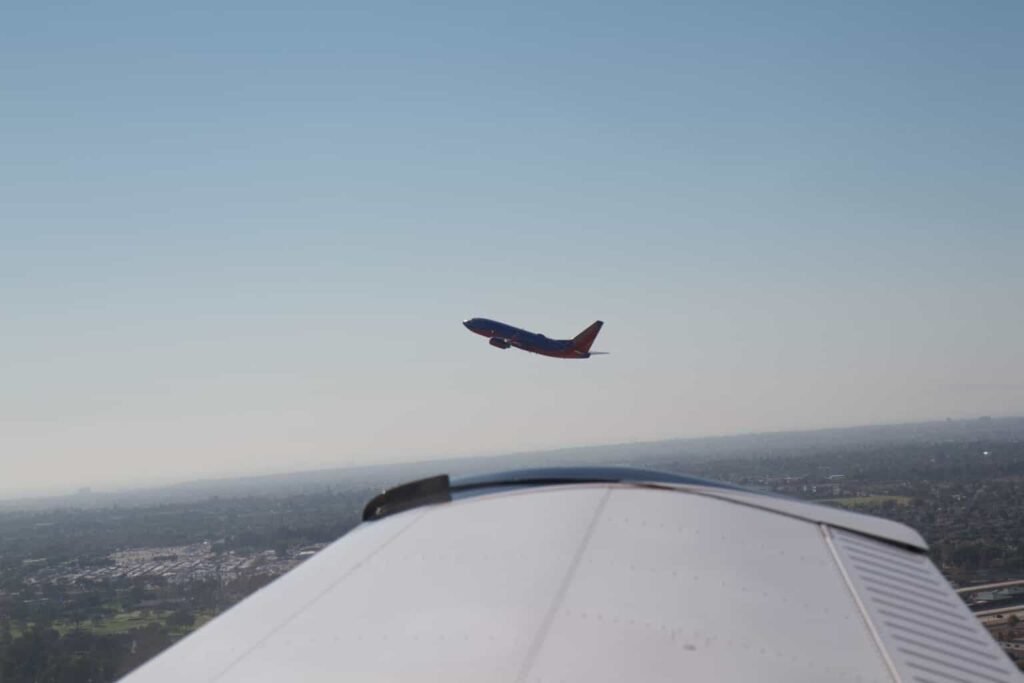
Fully Sponsored/Paid For Pilot Training
A HUGE topic when looking at how to become a pilot, and the scheme that everyone wants to embark on.
When looking at how to become a pilot, everyone dreams of having their costly flight training paid for.
The good news is that some airlines will offer to pay for your flight training.
Some examples of this have been the British Airways and Virgin future pilot programs, which are not currently open at the time of writing (May 2023).
Sadly, due to the 1500-hour rule in America, these programs are more common in the UK/Europe than in America.
Although these schemes have been very rare in the past five years, they are starting to come back.
This is partly because airlines struggle to get enough qualified flight crew, causing a global pilot shortage (though more apparent in America than in the UK/Europe).
The most recent example of this paid-for training is the Tui-sponsored MPL program for those based in the UK/Europe!
TUI is covering some of the lucky cadet’s training costs. Their training will be completely specific to TUI’s requirements.
After completing the training, these lucky cadets will be bonded with this airline for several years.
These individuals will be required to pay if they leave the airline before the end of this bond period.
You are likely to receive a reduced starting salary to offset the cost of the training that the airline has provided you.
However, this is worth it, in my opinion, especially with the higher interest rates on pilot loans that we are seeing now!
These courses are massively in demand and very competitive. But ensure you get in early and give it your best shot if you are eligible for them.
Keep an eye out for these courses in the future, as they are an incredible answer to how to become a pilot.
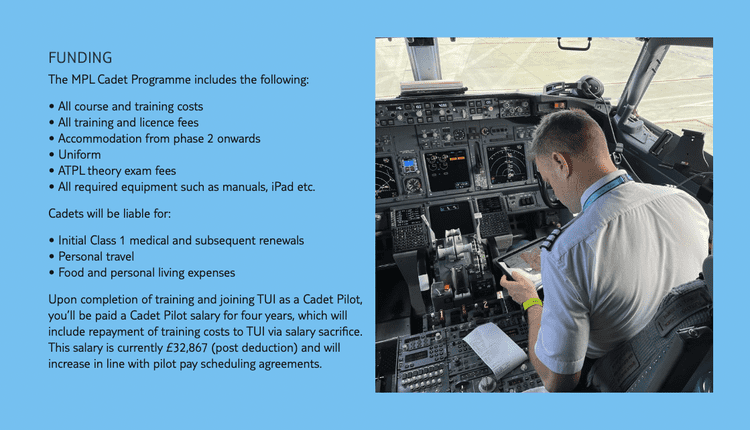
Passing Pilot Assessments – How To Become A Pilot
The assessment process for becoming a commercial pilot
When looking at how to become a pilot, we must find the perfect training academy and pass the selection day.
A how to become a commercial pilot guide wouldn’t be complete without an assessment day guide.
Nearly all flight training organizations/flight schools will require you to complete an assessment day before you are eligible to complete your training.
This is a big step when looking at how to become a pilot.
These selection days will involve the following:
- Maths Tests
- Aptitude Tests
- A Verbal Reasoning Test (less common)
- Group Exercises
- Interview Process
As well as this, you might be asked to provide a CV and a summary of why you want to be a pilot and the/qualities you have.
Keep reading for this essential part of the how to become a pilot guide.
Pilot Math Tests – Mental Math For Pilots

You may be wondering how to become a pilot and curious as to whether or not you need to be an expert at maths.
We have written an extensive guide explaining why pilots are tested on their maths and how to pass the maths tests during selection day.
The test usually follows a structure of one question per minute.
In nearly every case, the questions will be multiple-choice. The questions range in difficulty; for example:
- ‘What is the cube root of…?’
- ‘There are 39 inches in a meter and 31 12 inches in a foot. How many meters in ‘x’ amount of feet?’
- ‘What is 2345 x 18?’
- ‘Divide 345 by 1.3.’
You will be given a pen and paper during the day to allow you to write down your calculations, making it far more straightforward than having to perform them in your head without paper.
You will likely have to answer 1 question every minute on average (15 questions in 15 minutes).
If you want more guidance on preparing and passing these math assessment tests, read the full article, as passing these assessments is a fundamental part of how to become a pilot.
Pilot Aptitude Tests
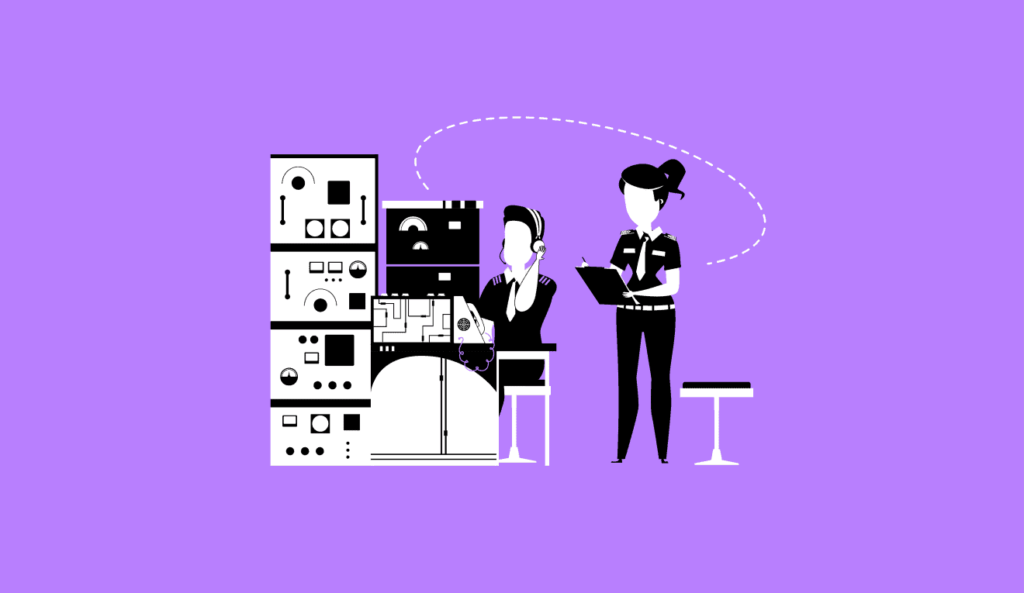
When looking at how to become a pilot, you may also wonder how to pass the pilot aptitude tests.
We have written an extensive guide about what to expect and how to pass your pilot aptitude tests.
Aptitude tests are part of nearly every assessment process for candidates wanting to enroll in a cadet program.
With the above in mind, you must research what you can expect during each airline of flight school aptitude test.
An internet search is one of the best places to start.
Many companies online were created to prepare future flyers for their aptitude test assessments.
These practice tests can be brilliant when looking at how to become a pilot.
These aptitude tests will likely always be based on a computer and involve pattern recognition, hand-eye coordination, and concentration tests.
Passing these tests is essential when looking at how to become a pilot.
Pilot Group Exercises
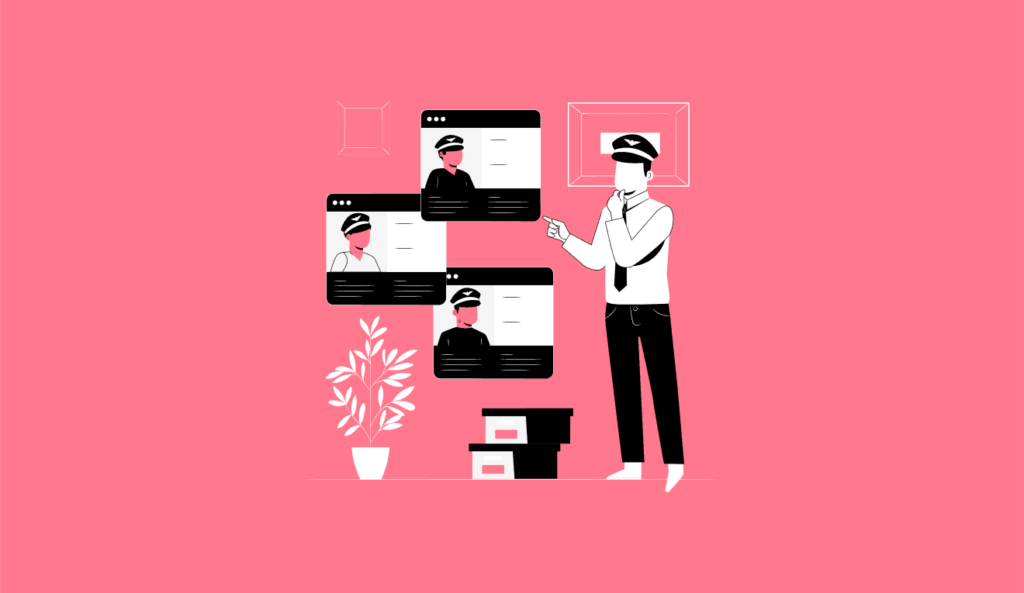
So you have found out how to pass the math and aptitude tests when researching how to become a pilot, and now you need to know how to pass the group exercises.
We have written an extensive guide about what to expect and how to pass your pilot group exercises.
As an airline captain or first officer, you must work well in a team on the flight deck with the captain, the cabin crew, air traffic control, and many other people and resources.
This is even more important during highly intense moments such as non-normal or emergencies.
These tests often feature on your pilot/airline assessment day.
Your flight school or airline will want to see your non-technical skills in the airline interview and group exercises.
These group exercise classes and assessments during your airline or flight school interview aim to display these non-technical skills.
These are skills such as teamwork, communication, leadership etc.
An example of what to expect might be:
You and your team are stuck on the moon with finite resources. These could be oxygen, tape, food, an iPod etc. Your team must rank these resources in order of importance.
Read the full pilot group exercises article to get the necessary assessment preparation. Passing these tests is essential when looking at how to become a pilot.
The Pilot Interview Process
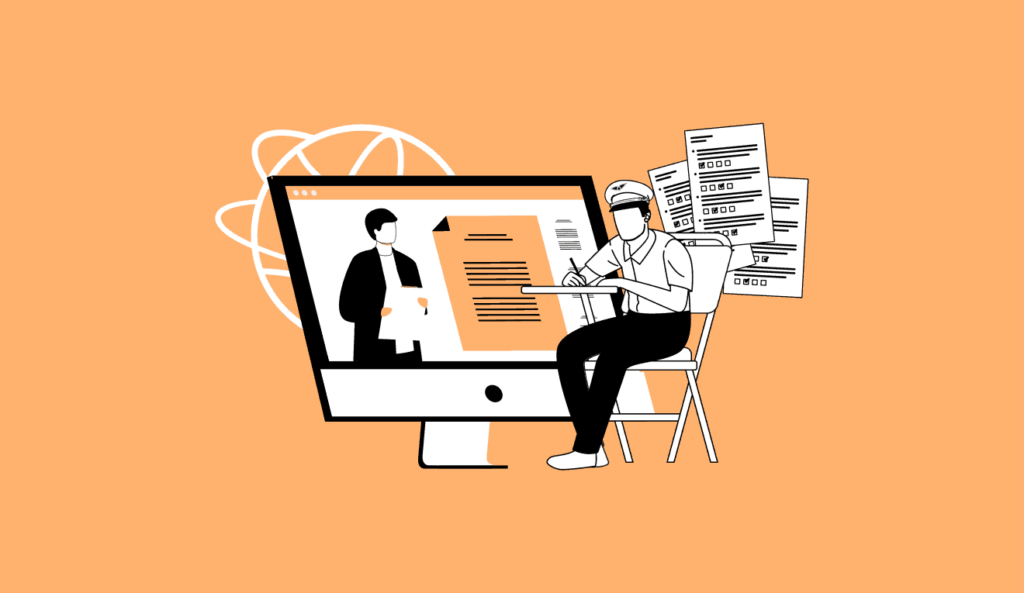
One of the questions I get asked the most about how to become a pilot is regarding the interview process.
We have written an extensive guide about what to expect and how to pass your pilot interview process.
The interviewer is interested in assessing the calibre of person you can become and if you have the non-technical skills, ambition, and drive to become an airline pilot.
To extract this information, they will mainly ask you about past experiences.
With these experiences, they will ask you when you have demonstrated specific skills, such as leadership, motivation, teamwork and much more.
They will also be looking at your communication skills as the interview is happening, so try and maintain open body language and use eye contact to your advantage.
Here are some examples of the questions you can expect in your airline pilot interview:
- ‘If we asked your friends to describe you in one word, what would it be?’
- ‘The captain and first officer are responsible for safely transporting their passengers to their destination. What else can a flight crew member do on top of performing their basic requirements that will improve the passengers’ overall experience?’
- ‘Tell me about a time when you have demonstrated leadership.’
- ‘When have you had a setback, and how did you overcome it?’
- ‘Tell me about a time when you have had to make a split-second decision. What was the result?’
- ‘Tell me about a time when things didn’t go to plan for you. How did you handle the situation?’
- ‘Demonstrate an example of how you could go above and beyond for customer service as an airline pilot.’
One of the most important things you can do when looking at how to become a pilot and pass your interview is to prepare examples.
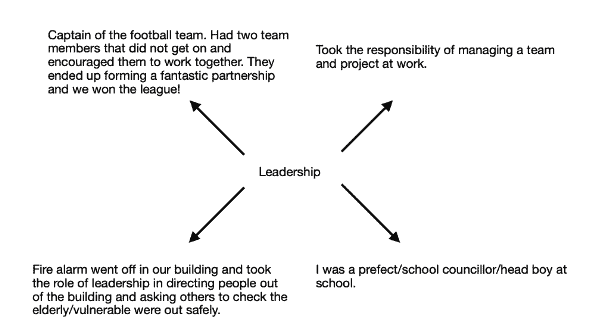
Find out how to best prepare for these pilot interview questions and how to become a commercial pilot.
How To Become A Pilot – Pass 14 Ground School Exams
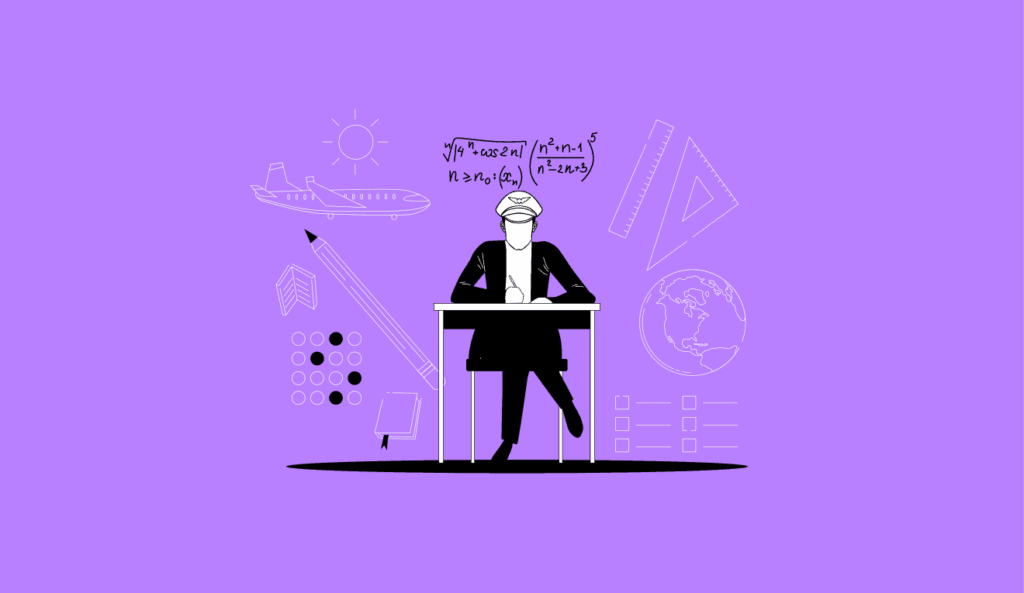
The next stage of our how to become a pilot guide looks at ground school.
We have written an extensive guide about what to expect and how to pass your 14 pilot ground school exams.
I get to many emails asking me how I passed my ground school and the best way to become a pilot.
Ground school is the first phase of training. For many, it is the most difficult.
No matter your FTO, ground school courses usually have the same structure.
If you embark on the integrated route, ground school runs over five to eight months and follows a steep learning curve.
It should be noted that social life is a myth during this stage. Therefore, the more effort you put in, the more you will get out.
Here’s a list of subjects you will cover:
- General Navigation
- Performance
- Aircraft General Knowledge
- Principles of Flight
- Communication 1
- Communication 2
- Radio Navigation
- Mass and Balance
- Performance
- Operations
- Flight Planning
- Meteorology
- Human Performance
- Air Law
Basic Flying, Going Solo and Multi-Engine Training
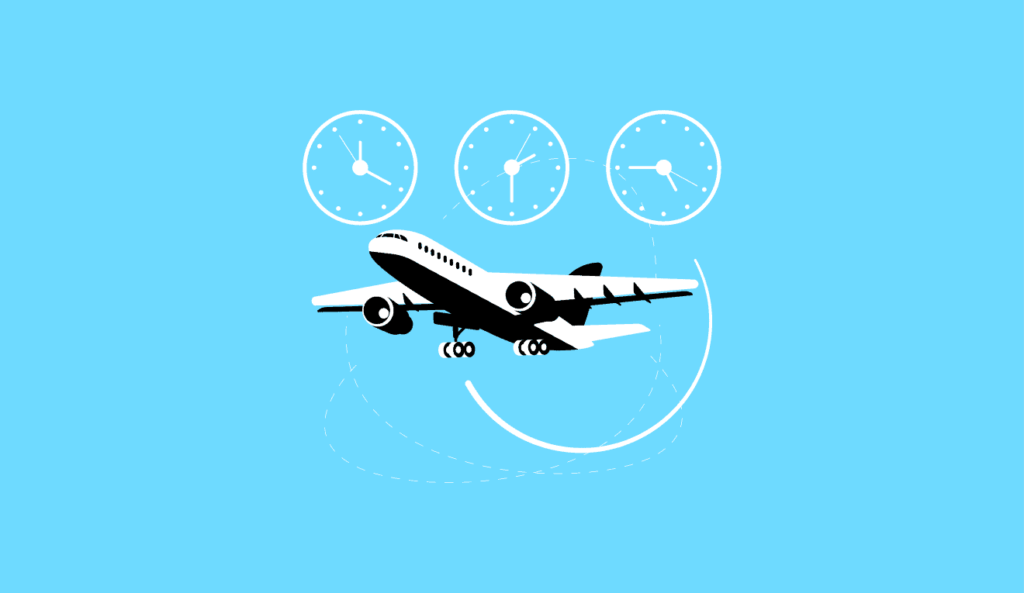
The next stage of this how to become a pilot guide looks at the basic flying and hour-building phase.
We have written an extensive guide about what to expect and how to pass your basic flying stage.
The next step, and one of the most important, is learning to fly.
This will involve you building up the skills required to achieve your commercial pilot’s license on a multi-engine propellor aircraft.
You will carry out various flying, including basic handling, navigation, night flying and much more.
Nearly all of this flying will be in visual flight rules conditions, known as VFR.
This means flying and navigating using external references, unlike the Instrument Flight Rules (IFR) training that you’ll do as part of your instrument rating.
You will start with an instructor until you have enough hours to fly solo or own your own. Once you can fly solo, you’ll achieve your student pilot certificate.
You will fly more adventurous navigation routes at around 20 hours of flight time.
Later during this stage, you will also likely get your multi-engine rating, allowing you to fly twin-engine aircraft.
You’ll face a series of practical exams, where you must prove that you can fly a series of maneuvers, navigate safely and fly a correct circuit pattern.
Once you complete this process, you will be given the relevant certification to achieve your Commercial License (CPL).
How To Become A Pilot – Instrument Rating
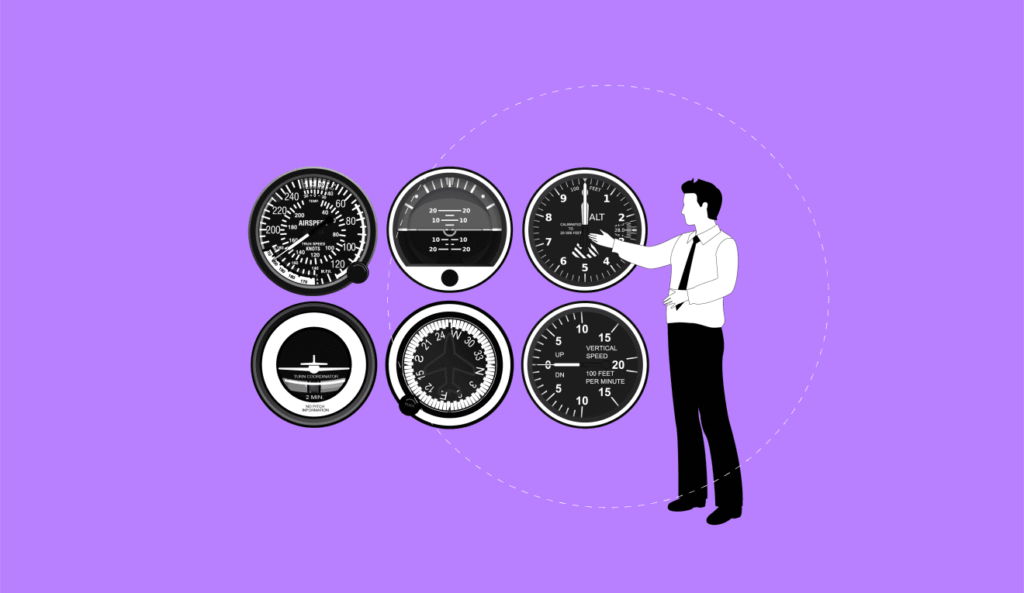
The next stage of this how to become a pilot guide looks at the Instrument Rating phase.
We have written an extensive guide about what to expect and how to pass your instrument rating.
The next stage of training is completing your Instrument Rating, thus giving you a full Commercial Pilot’s License with an Instrument Rating (CPLIR).
An instrument rating allows you to build your skills and fly an aircraft under Instrument Flight Rules (IFR) conditions.
This allows a cadet to fly using only their instruments and without reference to the outside from the window.
This is an essential skill; airline pilots will conduct 99% of their flying using their instruments only.
Complete your MCC/AQC Course
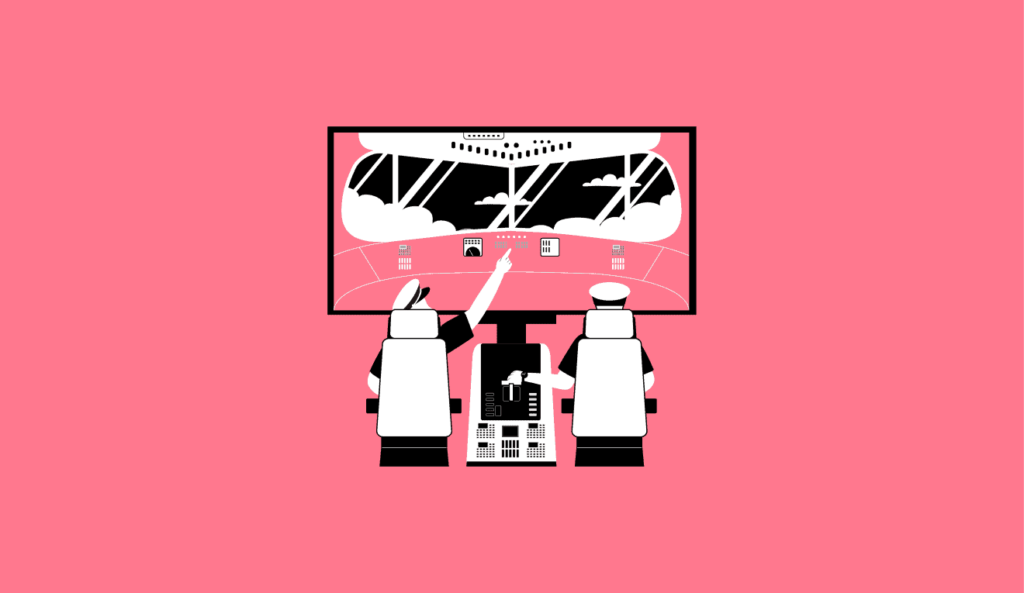
The next stage of this how to become a pilot guide looks at the Instrument Rating phase.
We have written an extensive guide about what to expect and how to pass your AQC/MCC Course.
You’re almost eligible to join an airline, but first, you need your MCC (multi-crew cooperation) Airline Qualification Certificate.
You might find that your flight training organization (FTO) doesn’t include this AQC course, and you may be sent off to another FTO to complete this part of the pilot training.
This will be your first time working with someone else in the cockpit and operating a two-crew aircraft.
Because you are now working with another pilot, you must keep everything standard by following these SOPs.
Keeping to these procedures is essential as it allows each pilot to know what the other is doing so that they both have the same mental model of the situation.
In addition, one day, you might work in the cockpit with someone whose first language isn’t English.
It is, therefore, essential to keep everything compliant with the procedures, with standard calls, language and phraseology so that everyone can understand.
The Chance Of Getting A Pilot Job After Flight Training

The next stage of this how to become a pilot guide looks at getting a job after your training.
After all, we conducted our training to get an airline job.
We have written an extensive guide about getting a pilot job after your training.
However, this will mainly be impacted by the current conditions within the airline industry.
Currently, the world is facing a never seen pilot shortage, meaning the demand for flight crew far outweighs the supply.
Qualified flyers can find jobs very quickly, particularly in North America.
It’s worth noting that those in America will need 1500 flight hours before working for an airline.
It’s worth noting that you will most likely need to complete a Type Rating once you join an airline.
This Type Rating is a license to fly a particular type of aircraft.
Type Ratings are required for airline transport pilots to fly for major airlines.
For example, I have a Type Rating on the Airbus A320 aircraft and couldn’t fly the Boeing 787 until I completed a new Type Rating on this aircraft.
This is a crucial step in how to become a pilot.
Pilot Career Progression
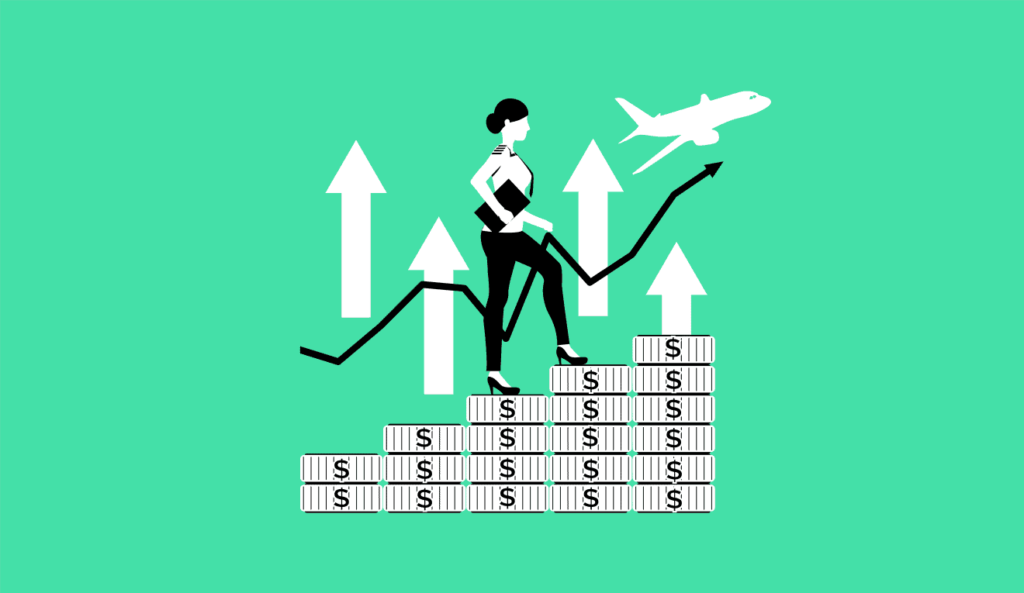
This how to become a pilot guide wouldn’t be complete without discussing your potential pilot career progression.
Pilots will work through their careers following a specified hierarchy. They are as follows:
- Second Officer (SO) – This is usually the rank given to a new entrant joining an airline for the first time with minimal experience. However, very few airlines still use this second officer rank. Once they have enough hours, they will be promoted.
- First Officer (FO) – This is the rank given to nearly all flight crew who are not captains. First officers can have minimal experience or be very experienced and senior. You will find a first officer in the right-hand seat.
- Senior First Officer (SFO) – These pilots will operate the same role as a first officer. Still, they will be promoted to SFO once they have achieved a certain level of experience or time within a company. This usually comes with a large pay rise from the FO role.
- Captain – This is the commander in charge of the aircraft. Captains sit in the left-hand seat of the aircraft. Captains will usually be paid a large sum of money for their role.
- Training Captain – These captains are specially trained to carry out pilot training. This training could be for new pilots with no experience or for the training required for a FO to become a captain.
The career outlook for commercial pilots – The Huge USA Pilot Shortage
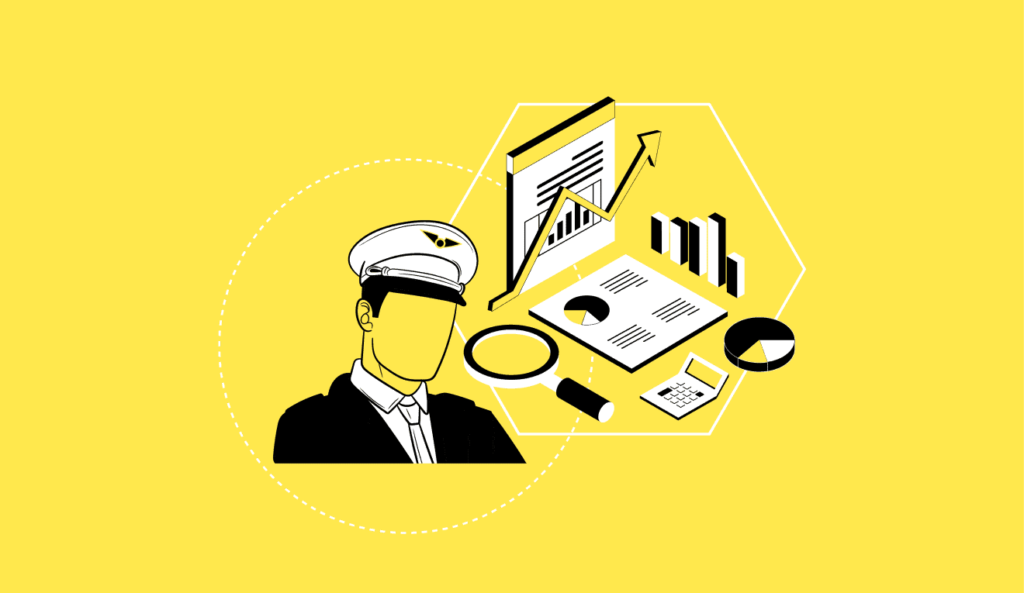
Studying the career outlook is a huge point of research when looking at how to become a pilot.
The demand for qualified flyers far outweighs the supply, creating a huge pilot shortage.
Therefore, salaries, signing bonuses, terms and conditions and the overall contracts being offered are significantly improving.
Delta Airlines flight crew just received a huge 34% pay rise over the next 3 years.
You can read more about the pilot shortage.
How Hard Is It To Become A Pilot?
This is an essential question when looking at how to become a pilot.
It isn’t easy to become a commercial airline pilot.
The training course will involve commitment and dedication for at least 18 months (18 months on an integrated course and potentially longer on the modular course).
Alongside working extremely hard, studying for hours a day and applying yourself fully, you must pay between $60,000-$100,000.
How To Become A Pilot – Summary
Now you know precisely how to become a pilot.
This has been an extensive guide that aims to discuss each step of how to become a pilot in detail.
I hope it has proved useful. As ever, if there is anything that I have missed in this how to become a pilot guide, then please do contact me.
A very rewarding career – the pilot career progression is completely different from many other fields of work.
Check out the full youtube video, all about salaries, and follow us on Instagram and tiktok!
Thanks for reading this how to become a pilot guide.

